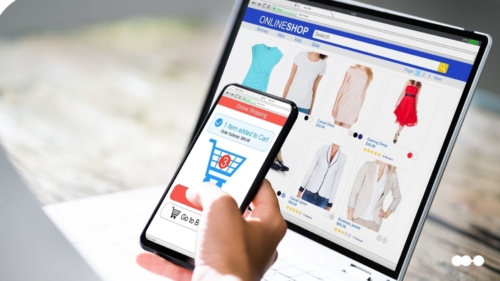
Customers can tell when a company’s systems are well-integrated. Almost everyone has had the experience of dealing with a company that doesn’t have strong internal communications: the frustrations of having to say the same thing multiple times, the feeling of being sent around in circles and the certainty that you’ll never get your problem solved.
When you encounter a company that has its customer service systems together, it’s like a breath of fresh air. That’s the image that you want to present to your customers, and an integrated customer support and success process can help get you there.
Customer success is how you keep customers satisfied in the hyper-competitive, customization-focused market of the 21st century. It’s a proactive approach, very different from the reactive customer service approach that has guided business in the past.
Unlike customer service providers, who often don’t encounter customers until a problem arises, customer success teams start working with a customer from day one. The conversation usually starts with a customer success manager, who talks with the customer and finds out what they need to get the most out of a product or service.
A customer success manager is your company’s primary point of contact with a customer. The customer success manager serves as a liaison between the customer and representatives from the customer success team.
Traditionally, customer service involves an issue-centric approach. Customers approach the company with a problem, the problem gets solved, and that’s the end of the conversation. There’s no relationship being built, and every customer becomes anonymous—a problem rather than a person.
Customer success is a person-centric approach. Company representatives approach the customer with the express purpose of getting to know them and how they plan to use the product or service. Customers feel like they matter to the brand.
When customers feel respected, they respect the company. They develop a strong sense of loyalty, and that leads to two things:
- The customer sticks around.
- The customer recommends the company to their friends and colleagues.
Less churn plus more referrals is a recipe for success for any company. But that doesn’t mean there’s no need for problem-solving. That’s where customer support comes in.
Even with the most proactive strategy, customers will still have questions and issues now and again. The faster you can respond and address those questions, the quicker you can turn a struggling customer into a happy customer.
To respond effectively to customer concerns, you need a great customer support team with the resources to solve problems quickly. The team needs to be able to work hand-in-hand with your customer success managers, taking on questions and problems and then recording the results for future reference.
For this collaboration to work, there has to be a single place where everyone can go to find information about a customer, their needs and their past issues. That place is your customer success platform.
An effective customer success team anticipates each customer’s needs, reaches out at just the right time and responds to issues quickly.
With an online customer support tool like Pipefy, you can have all of the information you need in one central place. You even save the time associated with creating tickets because it’s all done for you.
Here’s how it works:
- The customer fills out a support request, either on their own using an online form or through a representative who fills out the form for them.
- The completed form generates a new card: an activity record that contains all relevant information about the customer and what you need to do to resolve their request.
- The card notifies the team member who needs to take the next step. Once that’s done, the card moves on to the next phase in the support pipe.
- As the support effort progresses, the customer is kept informed by automated emails and team members are prompted to issue approvals, generate customer calls or do anything else that needs to be done.
- The card keeps moving through the pipe until it gets resolved or archived.
Here, we’ve outlined just a few ways that a comprehensive customer success platform streamlines work for your employees and serves your customers more effectively.
When you have a single source for all of your customer information, you can easily find records when you need them. The customer doesn’t have to wait for an answer and can move forward using the product or service, leaving the success experience unbroken.
Client success teams have traditionally relied on email threads and spreadsheets to record requests. Everything is there, but it can be difficult and time-consuming to find the request you need to address. That doesn’t just mean wasted resources on your end, it can also leave customers with a negative impression of your company and your team:
- 91% of customers find it frustrating that they have to contact companies multiple times to resolve an issue
- 90% hate having to wait on hold while a company hunts down their information
- 89% are frustrated by having to repeat themselves to multiple company representatives
Many of these frustrations stem from the use of outdated systems. Emails and spreadsheets can be disjointed, leading to confused teams and customers lingering on hold. You can avoid all of that simply by using a system that organizes things clearly and conveniently.
If you’ve ever received incorrect information from a company that they had to go back and fix, you know that it doesn’t look good. It used to be that the only way to avoid a situation like this was to transfer the customer’s call to another representative, and then another and another. Often, each representative would have to verbally pass the relevant information down the line, further delaying resolution and risking errors.
Today’s customer success tools keep all of a customer’s information together so when you have to pass a request up the line, everything’s there already. Some systems are even automated enough to send the ticket directly to the right person, depending on what’s listed in the support request.
In Pipefy, for example, you can design your support request forms so that they gather all of the information a representative might need to solve the problem—without asking for information that’s not relevant to that particular request.
Based on the customer’s answers to those questions, Pipefy will send the support ticket to the right person. This ensures that each customer gets excellent service and avoids the errors associated with poor communication.
Traditional customer service systems depend on email threads and spreadsheet activity. Any request that doesn’t get solved quickly is likely to get buried in new requests.
Customer success software keeps a task visible until it’s resolved. With Pipefy, you can even set up alerts so that your processes stay within the parameters of your service-level agreements. By establishing a due date and setting notifications for when a task is running behind schedule or overdue, you can see where things get stalled.
Real story: how GE Healthcare improved CSAT rates using Pipefy for Customer Support
Having this information allows you to expedite the resolution process. Also, by telling you which customers are getting their requests stuck, it lets you be more proactive and offer extra services where necessary.
Customers today want quick responses—and by quick, they mean instant. Around 80% of customers prefer to get an immediate response when they reach out with a question, and 71% expect to get replies at any hour of the day.
Automation can help you to meet these expectations. Customer success tools like Pipefy let you set up automated emails that are triggered by an action you specify, like when a customer sends a support request or follow-up. They hear from you instantly and both messages get recorded on the customer’s card.
Also, because Pipefy offers email templates with dynamic content, you can customize these follow-up emails with the customer’s name and issue so they seem more personal.
Customer success metrics are the first step toward improving the customer experience. If you’re using a basic customer support method like email or spreadsheets, you have no way to measure the success of your team.
A customer success platform gives you the tools you need to track essential customer support KPIs, such as:
- Customer satisfaction score: The number of happy customers vs the total number surveyed
- First call resolution: The percentage of tickets solved without the customer having to reach out again
- Average response time: How long it takes the customer to get a reply
- Cost vs revenue: Total customer support expenditure divided by the total number of tickets
Real story: how Viveo reduced their average response time to 30 seconds using Pipefy.
Pipefy’s reports can provide you with the facts to help you calculate most of these numbers. To determine the less objective measures of success, such as customer satisfaction scores, you can set up feedback surveys to go out every time a request is resolved.
You can also use Pipefy metrics to understand any bottlenecks you might be noticing in your system. By filtering your view of the pipe and reports based on criteria like service request type or assigned representative, it’s easy to see what requests are getting stuck and where.
By helping you to keep the customer satisfied, customer support software increases client loyalty and reduces expensive churn.
It can cost up to five times as much to land a new customer than to retain an existing one. From a very literal standpoint, every customer counts.
Also, because customer support software makes service more efficient, it reduces the number of labor hours that you have to pay for. A good software program also reduces customer churn so that you don’t have to spend marketing dollars getting new customers.
When you can control costs and boost revenue by increasing your value to customers, that’s a win-win for your company.
Having this information allows you to expedite the resolution process. Also, by telling you which customers are getting their requests stuck, it lets you be more proactive and offer extra services where necessary.
Customers today want quick responses—and by quick, they mean instant. Around 80% of customers prefer to get an immediate response when they reach out with a question, and 71% expect to get replies at any hour of the day.
Automation can help you to meet these expectations. Customer success tools like Pipefy let you set up automated emails that are triggered by an action you specify, like when a customer sends a support request or follow-up. They hear from you instantly and both messages get recorded on the customer’s card.
Also, because Pipefy offers email templates with dynamic content, you can customize these follow-up emails with the customer’s name and issue so they seem more personal.






